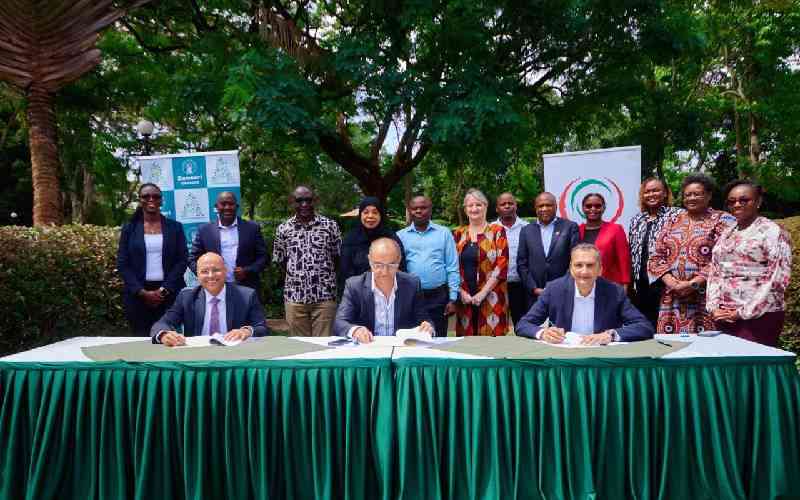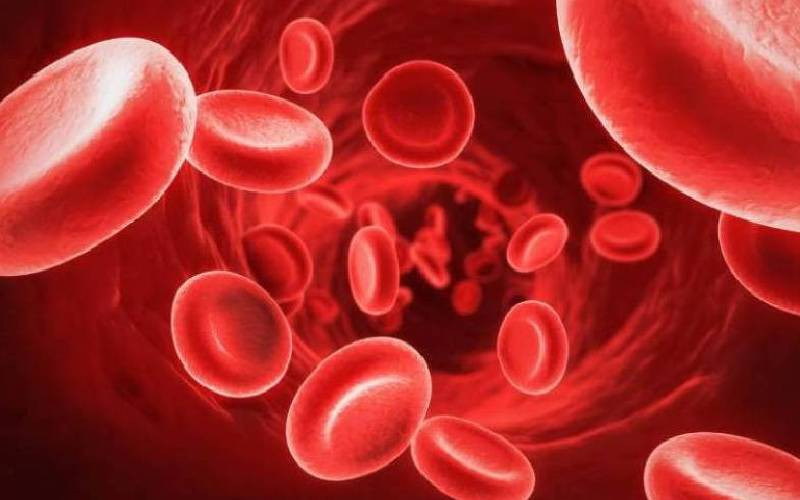
Kenya is reporting a surge in syphilis, while Baringo County leads in Hepatitis B infections.
Approximately 1.8 per cent of the population tests positive for the disease.
This is according to a new report by the National Aids and STIs Control Programme (NASCOP) and UNaids
Despite the high number of infections, only a small proportion of those who test positive for syphilis seek treatment.
The report, titled ‘‘Triple Elimination: Private Health Sector and Professional Association’’, reveals that the infections were recorded in 2022.
In 2024, 16 per cent of those infected with syphilis were women, yet only nine per cent of them received treatment.
- Break the silence: Normalise hearing health care
- Snakebites still a major public health concern in Kenya
- WHO report reveals progress in tobacco war but gaps remain
- Unmasking the pain behind men's mental health
Keep Reading
Most of the women who tested positive for the sexually transmitted disease were identified during Antenatal Clinics (ANC), alongside HIV.
In 2024, for instance, the country registered a total of 1,766,099 pregnancies, among the 1,468,615 enrolled for ANC.
Globally, at least eight million people were infected in 2022, including 700,000 infants who acquired the infection from their mothers.
A NASCOP official, Frankline Sangok, said that although the number of syphilis infections is high, screening is not done optimally due to a lack of test kits.
“We have a problem with screening for syphilis because of a lack of kits for testing,” said Sangok during the release of preliminary findings.
Top counties in syphilis testing include Laikipia, Nyeri, Nakuru, Makueni, Uasin Gishu, Nyamira, Machakos, Kirinyaga, Kakamega, Homa Bay, and Kajiado.
Others are Murang’a, Mombasa, Nyandarua, Nairobi, Kilifi, Kisii, Busia, and Bomet.
The disease presents a painless sore at the site of infection, while secondary syphilis may include a non-itchy rash—often on the palms and soles along with fever, swollen lymph nodes, and flu-like symptoms.
According to the World Health Organisation, if a pregnant woman who is infected does not receive early and effective treatment, she can transmit the infection to her unborn infant, commonly known as congenital syphilis.
Among interventions for optimal testing and treatment of the disease, according to NASCOP and UNAids, are addressing vulnerabilities and inequalities that sustain new infections and impede progress, tackling health barriers to quality services, ensuring supply chain sustainability, and building social capital and community intelligence to diagnose and treat syphilis.
Amid dwindling donor support, the ministry is banking on leadership and alignment of resources with national priorities.
The report was released during a public-private partnership engagement meant to onboard all stakeholders in the elimination of syphilis, HIV, and hepatitis B.
Private hospitals are expected to help mobilise resources and share accurate data with the ministry for proper planning.
LVCT Health representative, Patrick Oyaro, said there is a need to document data to support planning.
“Data is key. There is no way you will plan appropriately without data. This shall help in procurement of commodities and treatment,” said Dr Oyaro.
Meanwhile, three per cent of the Kenyan population has Hepatitis B.
Baringo County is leading in Hepatitis B cases at 12 per cent, followed by Migori and Turkana counties.
The Head of Viral Hepatitis and Sexually Transmitted Infections (STIs) at NASCOP, Nazila Ganatra, said stigma greatly affects the eradication of the disease.
“Lack of awareness and stigma are among the challenges derailing the elimination of Hepatitis,” Dr Ganatra said in an interview.
Hepatitis is the inflammation of the liver and may present with pain or bloating of the belly, dark urine, fatigue, and general body weakness.
Other symptoms include loss of appetite, nausea, and vomiting.
If left untreated, it can damage vital organs including the kidneys and lungs, and beyond that, can lead to death.
According to the expert, adherence to treatment can suppress the virus and prevent underlying health complications such as liver cirrhosis, liver cancer, and kidney failure.
Patients widely use tenofovir and lamivudine.
Globally, at least 304 million people are living with hepatitis — 254 million of them afflicted by Hepatitis B, and Hepatitis C affecting another 50 million.
Data from NASCOP shows that in Kenya, about 1.9 million people are infected with Hepatitis B and C viruses, with the majority (1.56 million) having Hepatitis B.
An additional report by the Kenya Population-based HIV Impact Assessment (KENPHIA) 2018 estimates Hepatitis B prevalence at three per cent among the general population, and 4.7 per cent among people living with HIV/AIDS.
Ganatra noted that research is ongoing to establish the causes of increased cases in these regions, but said stigma significantly limits access to care.
The Ministry of Health, through NASCOP, has set up a unit to scale up awareness, screening, and treatment.
“We want to create more awareness of the disease in the population because it is treatable and preventable,” she said.
Further, the ministry is working towards the elimination of mother-to-child transmission.
“One of the agendas of elimination is ensuring that a mother attending ANC is tested for HIV, syphilis, and Hepatitis, for a comprehensive approach to disease reduction,” added Ganatra.
 The Standard Group Plc is a multi-media organization with investments in media
platforms spanning newspaper print
operations, television, radio broadcasting, digital and online services. The
Standard Group is recognized as a
leading multi-media house in Kenya with a key influence in matters of national
and international interest.
The Standard Group Plc is a multi-media organization with investments in media
platforms spanning newspaper print
operations, television, radio broadcasting, digital and online services. The
Standard Group is recognized as a
leading multi-media house in Kenya with a key influence in matters of national
and international interest.











